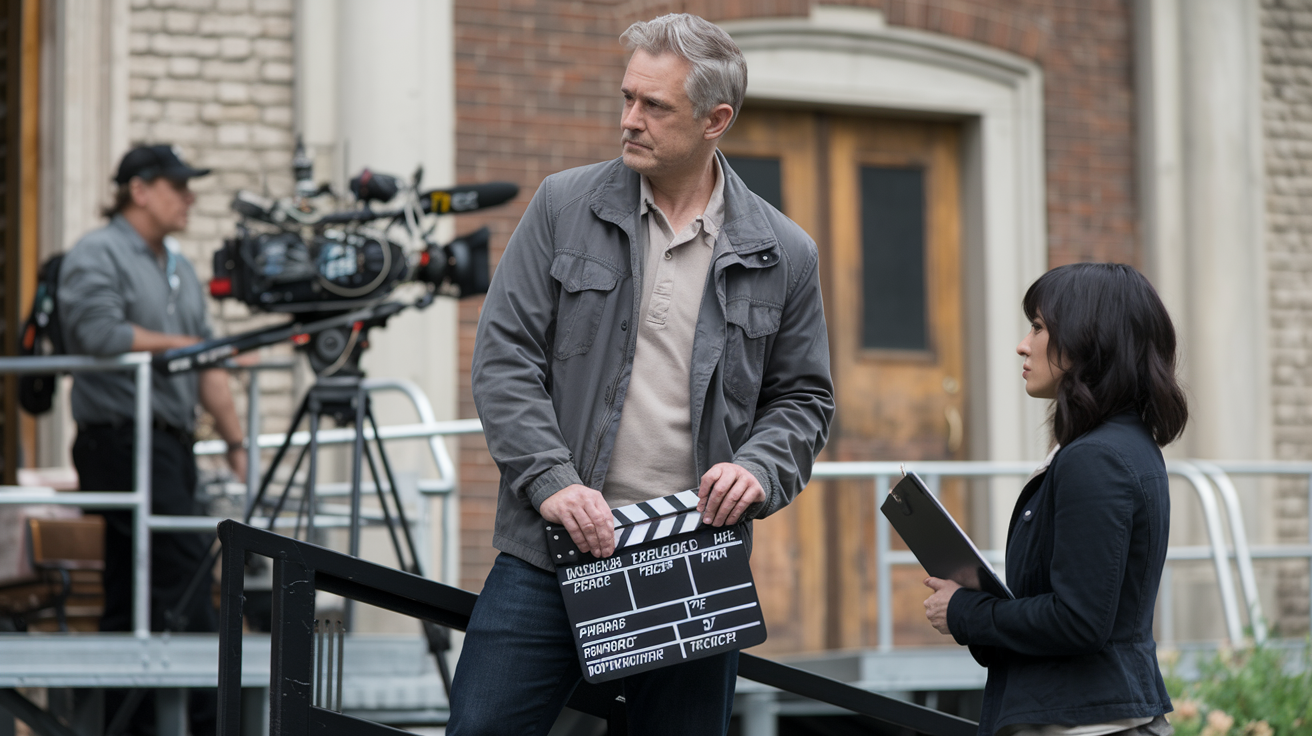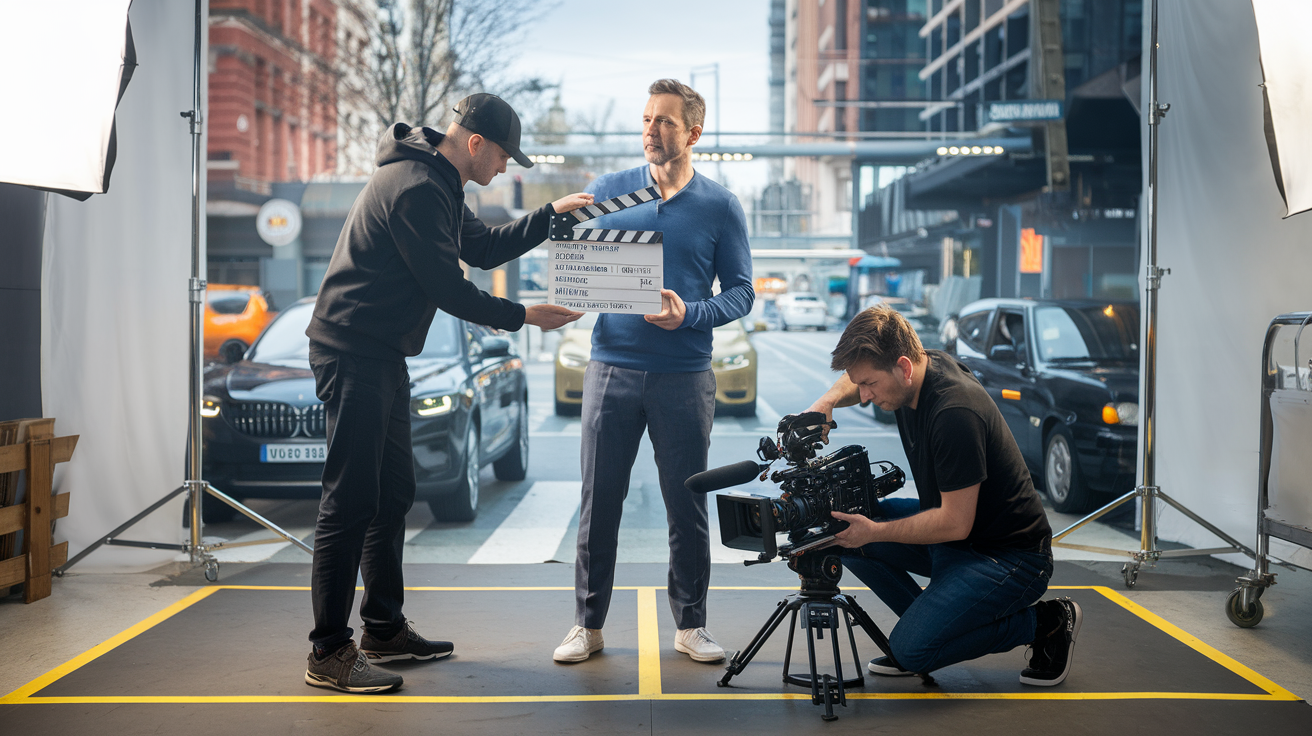Film Pre-Production: Laying the Groundwork for Success.
Film pre-production is like laying the foundation for a house. Just as builders need solid plans to create something strong and beautiful, filmmakers require thorough preparation before cameras start rolling. Pre-production helps turn creative ideas into reality by planning every detail, from scripts and casting to locations and budgets. Without this crucial step, films may falter, missing the mark with audiences.
Proper pre-production can greatly boost a film’s quality. When every element is carefully planned, magic happens on screen. Stories come alive with fully developed characters and vivid settings. This planning also fosters teamwork among cast and crew members. By engaging in the pre-production process, filmmakers set themselves up for success that resonates long after the credits roll. Ready to explore how each step unfolds? Let’s dive into the essentials of an amazing film pre-production!
Script Development.
A well-crafted script is the backbone of any successful film. It shapes the story, characters, and emotional arcs that drive the entire production. Without a strong foundation, even the most talented cast and crew may struggle to convey the intended message. The journey from idea to screenplay demands careful attention to storytelling principles and dialogue refinement.
Refining dialogue and developing characters are key to enhancing a script’s quality. Dialogue should feel natural and true to each character’s voice, allowing viewers to connect with them. Workshops and feedback sessions can help identify areas for improvement, ensuring authenticity without losing the script’s essence.
Storyboarding also plays a crucial role in visualizing the narrative before filming begins. By illustrating key scenes, filmmakers can plan camera angles, movement, and pacing. Storyboards act as a guide to keep production on track and spot potential issues early on. Investing time in script development and storyboarding sets the stage for clearer communication among the team, ultimately leading to a more compelling film.
Budgeting Essentials.
Creating a production budget is essential for a smooth filmmaking process. This includes estimating costs for cast salaries, crew wages, location expenses, equipment rentals, and additional costs like permits and insurance. Filmmakers must be realistic in estimating expenses, as an inflated budget can derail the entire project.

Maximizing resources without compromising quality is a balancing act. Creative solutions, such as partnering with local businesses for sponsorships or using volunteer talent, can help stretch the budget. Prioritizing essential aspects of production over extravagances is key to managing finances efficiently.
Budgeting tools like Movie Magic Budgeting help track spending and ensure accountability. By paying close attention to budgeting during pre-production, filmmakers lay a strong financial foundation that supports both creativity and fiscal responsibility.
Casting the Right Talent.
Casting decisions are critical to a film’s success. The right actors bring characters to life, creating a connection with the audience. Iconic casting choices, like Robert Downey Jr. as Iron Man, can shape the entire narrative. That’s why selecting talent carefully is essential.
To organize auditions effectively, clear communication and structured processes are vital. Detailed breakdowns of character requirements and well-organized audition sessions help filmmakers find the right fit. After casting, fostering chemistry among cast members through workshops or rehearsals strengthens on-screen dynamics, leading to more authentic performances.
Assembling Your Crew.
A film crew consists of various roles, each contributing to the success of the production. Key positions like the director, cinematographer, and sound designer are essential for executing the creative vision. Other roles, like makeup artists and grips, also play important parts in making the project run smoothly.
Finding experienced crew members, especially in independent films, can be challenging. Networking events, film festivals, and online platforms are great ways to connect with potential crew members. Open communication about budgets and expectations helps attract the right talent. Once assembled, fostering collaboration and trust within the crew through regular meetings and team-building activities ensures a smoother production process.
Location Scouting.
Location selection is critical for bringing a film’s narrative to life. The right settings enhance the story’s themes and emotions. For instance, an abandoned warehouse can evoke feelings of isolation, while a sunlit park may convey happiness. Ensuring that locations align with the story is essential to creating a coherent visual experience.
Legal considerations, such as permits and property permissions, must be addressed early. Logistical factors like accessibility, parking, and proximity to essential services are also important. Developing contingency plans for weather or other disruptions ensures that filming stays on track.
Location scouting is about more than finding pretty backdrops; it’s about creating a setting that enhances the storytelling while navigating legal and logistical challenges.
Production Design Planning.
Production design establishes the mood and setting of a film. By carefully considering elements like colors, textures, and set design, filmmakers can evoke specific emotions that align with the story. Collaborating with skilled production designers ensures that the visual world supports the narrative.
Budgeting for set construction and props requires careful prioritization. Using versatile materials or seeking sponsorships can help stretch limited budgets. Production design, when well-planned, immerses viewers in the story, adding depth and meaning to the film’s visual elements.

Scheduling Rehearsals and Shoot Days.
A detailed shooting schedule is essential for keeping production on track. Planning specific dates and times for each scene ensures that all cast and crew members are prepared. Scheduling rehearsal periods allows actors to familiarize themselves with their roles, leading to more authentic performances.
Balancing time management with creativity during rehearsals is key. Allocating time for both structured practice and creative exploration keeps the process dynamic and engaging. Building buffer times into the schedule allows for flexibility in case of unexpected challenges, ensuring that the project stays on course.
By carefully scheduling rehearsals and shoot days, filmmakers create a professional yet flexible environment that supports creativity and collaboration.
Film pre-production is a vital step that sets the stage for success. From script development to budgeting, casting, and location scouting, each element plays a role in bringing a story to life. When filmmakers invest time and effort into planning, they not only ensure a smoother production process but also create the foundation for a film that resonates with audiences long after the credits roll.

I am a highly experienced film and media person who has a great deal to offer to like-minded individuals. Currently working on several exciting projects, I am a film and media practitioner for over a decade. I have achieved a great deal of success in my professional career.





